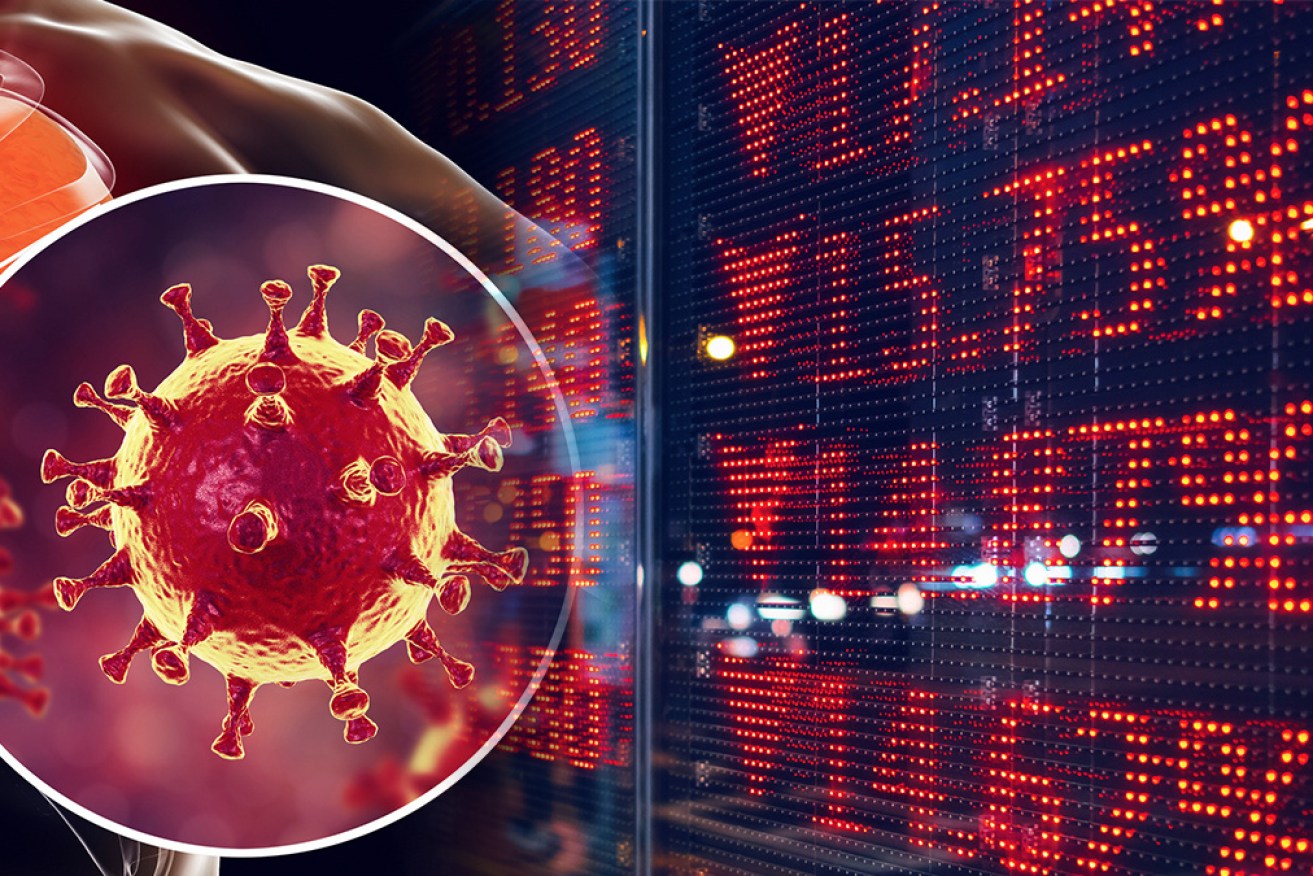Virus triggers ‘absolutely brutal’ loss as panic-selling kicks in


The virus has given the ASX another kick in the teeth. Photo: The New Daily
The Australian sharemarket has suffered an “absolutely brutal” session of panic-selling after US President Donald Trump closed American borders to European travellers.
Despite the federal government’s announcement of a multibillion-dollar stimulus package, the ASX fell 7.4 per cent on Thursday – the worst fall since the collapse of US investment bank Lehman Brothers in 2008.
The market got off to a shaky start after Wall Street on Wednesday night posted a 5.8 per cent fall on the back of the World Health Organisation’s decision to declare a global pandemic.
And policymakers around the world failed to stem the tide – with the ASX shedding more than $120 billion in value despite interventions from Washington, Downing Street and Parliament House.
On Friday morning (Australian time), the UK sharemarket suffered its worst day since 1987, with the UK index dropping more than 10 per cent.
US stocks also plummeted and the Dow was nearing 1987 levels before the Federal Reserve vowed to pump in more than $US1 trillion ($1.59 trillion) to counteract the impact of the virus.
AMP Capital chief economist and head of investment strategy Shane Oliver said the biggest fall came after President Trump addressed the American public on Thursday afternoon (Australian time).
“We were down about two and a half per cent after the government announced its fiscal stimulus in Australia, so it’s mainly his comments which have knocked us down again,” Dr Oliver told The New Daily.
President Trump dashed hopes of a massive spending program to support economic growth, he said.
And the travel ban only added to the pain and uncertainty.
Tweet from @CommSec
The biggest losers
President Trump said he would introduce tax holidays for eligible individuals and provide capital and loans totalling $50 billion to affected businesses – subject to approval from Congress.
He said the moves would provide “more than $200 billion of additional liquidity into the economy,” which amounts to just under 1 per cent of annual GDP.
Dr Oliver said “Trump came up short”.
“And that in turn was overshadowed by the restrictions on travel with Europe,” he said.
Perhaps unsurprisingly, travel stocks took a battering.
Qantas shares fell 9.9 per cent to $3.64, Flight Centre dropped 18.2 per cent to $19.61, and Webjet plunged 19.7 per cent to $5.56.
They bore the brunt of the falls. But every sector suffered.
All of the Big Four banks shed more than 7.9 per cent in value; Telstra plummeted 8.2 per cent to $3.12; and Transurban nosedived 10.3 per cent to $12.64.
The broader index dropped to its lowest level in more than three years and is now down 26.3 per cent from its record high in February – meaning it has officially become a ‘bear market’.
Tweet from @_warrenhogan
This time it’s different
Although markets haven’t experienced panic-selling on this scale since the GFC, former stockbroker and Bourse Communications founder Rod North said the market would recover much faster this time around.
Given the average top-to-bottom fall in previous bear markets has been 35 per cent, Mr North said the ASX could easily fall another 9 percentage points before stabilising.
But he said the market would quickly bounce back as the underlying fundamentals were strong and low interest rates would support the recovery.
“This not a GFC,” Mr North told The New Daily.
“Fundamentally, companies have still got good and sustainable earnings. And provided we can see this coronavirus dealt with quickly and a vaccine comes to fruition, it could turn around much quicker than we think.”
Mr North added that a strong recovery was subject to the federal government upping its stimulus package.
He said the $17.6 billion it had so far put forward was insufficient, given the severity of the challenges facing the economy, and he expected more to come.
“I bet you they will come up with another $10 billion, because they’ll realise that they’ve undercut it … because at the end of the day you’ve got to get people spending in the economy again,” he said.
Tweet from @TheKouk
‘Debt matters’
Pepperstone head of research Chris Weston also said the sharemarket plunge was different to the GFC.
But he described the panic-selling as “absolutely brutal” and told The New Daily the sharp falls had exposed the “limitations of central bank policy”.
Since the GFC, central banks the world over have repeatedly pumped up the market by slashing interest rates and encouraging investors to take on more risk, he said.
But with global interest rates already so close to zero, central banks can no longer come to the rescue.
“The market has said, really since the GFC, that ‘we’ve got this safety blanket which has allowed us to sell volatility and keep buying the dip all the way up’, and that’s really been premised on the fact that any kind of downturn – just 5 per cent – and the feds start talking about rate cuts,” Mr Weston said.
“Well this time it’s different. The rate cuts are not going to help the virus. Governments need to do more.”
Mr Weston said central banks’ willingness to intervene at the earliest sign of a market dip had prevented a major downturn, but kept bad firms in business and injected huge amounts of debt into the global economy.
“And debt matters when you get economic fragility.”








